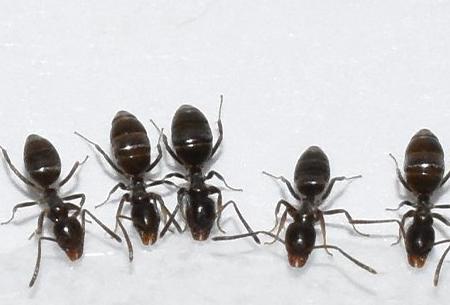June 30, 2023
There are many types of ants in Oklahoma that can become problematic for homeowners. These tiny insects may only be a few millimeters long, but they are still capable of causing a lot of problems for you and your family. If you have been struggling with ants around your home, Montgomery Exterminating is here to help. We have been providing pest control in Owasso for over 25 years, and we understand all of the unique habits and behaviors of the common ants in this area. Read our comprehensive guide on ant control to learn the best way to keep these problem pests away from your home.
Identifying Common Ant Species
It is estimated that there are more than 12,000 different types of ants in the world. Luckily, in this part of Oklahoma, we are only likely to come into contact with a few different species of ants. Some of the most common types of ants that are found in Owasso include:
- Pharaoh ants: This type of ant is small and usually only measures about 1/16 of an inch long. They tend to have pale-colored bodies that are typically yellow or light red. They may also have a dark-colored abdomen as well. This ant is commonly found in commercial areas but can invade your home. When indoors, they will live in large colonies found underneath floorboards, behind walls, or any other hard-to-reach area.
- Carpenter Ants: These are the largest types of ants you will likely see around your home. They can measure up to 5/8 inches long and have black or red bodies. They are known for using their strong saw-like jaws to chew and dig away at wooden surfaces to build their nest inside the wood. You will usually see small and smooth holes in your wooden surfaces if you have carpenter ants on your property.
- Odorous house ants: This is one of the most common types of ants that people find inside their homes. The odorous house ant can measure from 1/16 to 1/8 inches long and typically have dark brown or black bodies. They are drawn to sweet-tasting foods and liquids. They get their name from the foul odor they emit when crushed.
The ants in this area are known to be social insects. They typically live in colonies that contain over 100,000 ants. If you see even one or two ants in your home, there is a good chance that several thousand more are hiding in your house somewhere.
The Risks And Health Concerns Of Ants In The House
Ants are more than just a nuisance. If you see ants crawling around your food or your food preparation areas, there is a chance that your food could be contaminated with harmful pathogens. Ants are known to spread harmful illnesses, which could include E. coli, staph infections, and salmonellosis.
Carpenter ants can also cause problems in your home. They are known for their ability to excavate wood and will dig out various wooden surfaces to build their nest inside the wood. As their colony and nest continue to grow, the wooden surface will become more hollow, which could affect the structural integrity of the home or building they are nesting in.
Five Naturally Effective And Prevention Tips
When it comes to effective ant control, prevention is key. Some of the things that you can do to keep ants away from your home include:
- Store all dry food in a sealed container
- Fix any leaky faucets or other moisture issues in your home as soon as possible
- Take the trash out often
- Keep your home tidy, and don’t leave food crumbs on the floor or dirty dishes in the sink.
- Keep the grass in your yard cut short, and cut shrubs and vegetation back away from your home
The ants in this area are extremely invasive. Once ants have decided to build their nest in your home, it can be challenging to get them to leave.
Professional Ant Control: A Great Way To Keep Ants Out For Good
The best way to eliminate ants and keep them away from your Owasso home is to give us a call. At Montgomery Exterminating, we have a comprehensive, multi-step home pest control plan that eliminates and prevents ant infestations for good. Give us a call today to get your free quote.



